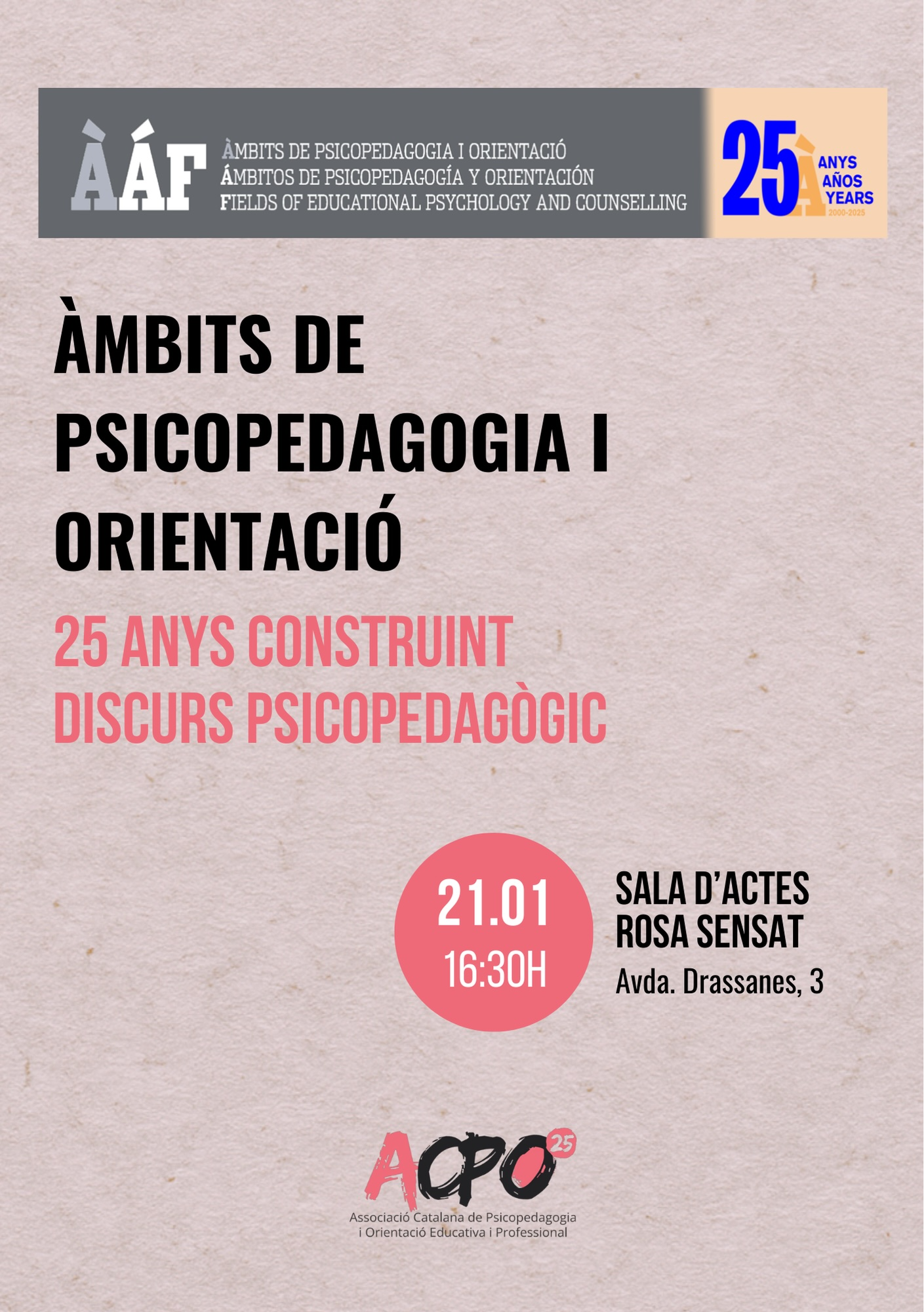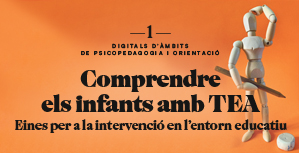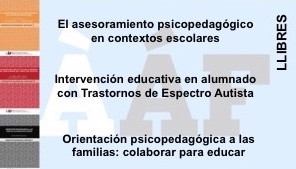Programa per a testimonis de violència domèstica (programa TEVIST): donant veu a una realitat silenciosa
DOI:
https://doi.org/10.32093/ambits.vi60504955Paraules clau:
violència domèstica, maltractament, nens, nenes, adolescents, salut mental, programaResum
L'exposició a la violència domèstica és un tipus de maltractament amb conseqüències equiparables a les del maltractament directe. Dues terceres parts d'aquestes nenes, nens i adolescents tenen problemes de salut mental, així com problemes en el desenvolupament, cognitius, socials i escolars. Però la violència domèstica és un problema silenciós i aquests infants arriben als centres de salut mental infantil i juvenil amb multitud de símptomes psicològics que poden ser erròniament diagnosticats i tractats si no es detecta la violència patida. El Centre de Salut Mental Infantil i Juvenil (CSMIJ) de Cornellà va crear fa més de 20 anys un programa per a detectar, diagnosticar i tractar específicament els problemes de salut mental relacionats amb el maltractament i l'exposició a la violència domèstica. El programa s'ha escalat i implementat a quatre CSMIJs i Hospitals de Dia, que com el de Cornellà, formen part de l'àrea comunitària de l'Hospital Sant Joan de Déu de Barcelona. Aquest treball explica les característiques principals del programa i els tractaments desenvolupats.
Referències
Achenbach, T. M., McConaughy, S. H., & Howell, C. T. (1987). "Child/adolescent behavioral and emotional problems: implications of cross-informant correlations for situational specificity". Psychol.Bull., 101(0033–2909; 0033–2909; 2), 213– 232
ANAR- Fundación. (2020). Comparecencia de la Fundación ANAR ante la Comisión para la Reconstrucción social y Económica del Congreso de los Diputados con objeto de informar sobre los efectos del Confinamiento sobre los menores de edad en España (pp. 1–13). https://www.anar.org/wp-content/uploads/2020/05/Comparecencia-de-ANAR-enel- Congreso-29-05-2020-4.pdf
Annerbäck, E.M., Wingren, G., Svedin, C.G., & Gustafsson, P.A. (2010). "Prevalence and characteristics of child physical abuse in Sweden - Findings from a population-based youth survey". Acta Paediatrica, International Journal of Paediatrics, 99(8), 1229-1236.
Arrizabalaga, P., & Santiñà, M. (2012). "L’abordatge mèdic de la violència envers les dones i llurs fills i filles". In Quaderns de la Bona Praxi (No. 31; Centrer d’estudis Col.Legials). http://www.gencat.cat/salut/botss/html/ca/dir3612/qbp_31.pdf
Atenciano Jiménez, B. (2009). "Menores Expuestos a Violencia contra la Pareja : Notas para una Práctica Clínica Basada en la Evidencia". Clínica y Salud, 20(3), 261– 272.
Augustyn, M., & McAlister, G. B. (2005). "Training clinicians to identify the hidden victims: children and adolescents who witness violence". American Journal of Preventive Medicine, 29(0749–3797; 0749–3797; 5), 272–278.
Bevan, E., & Higgins, D. J. (2002). "Is Domestic Violence Learned? The Contribution of Five Forms of Child Maltreatment to Men’s Violence and Adjustment". Journal of Family Violence,17(3), 223–245. https://doi.org/10.1023/A:1016053228021
Brown, J. B., Lent, B., Brett, P. J., Sas, G., & Pederson, L. L. (1996). "Development of the Woman Abuse Screening Tool for use in family practice". Family Medicine, 28(6), 422–428.
Carrion, V.G., Kletter, H. (2012). "Posttraumatic stress disorder: shifting toward a developmental framework". Child Adolesc Psychiatr Clin N Am. 21(3):573-91. doi: 10.1016/j.chc.2012.05.004. Epub 2012 May 30. PMID: 22800995.
Delegación Gobierno para la Violencia de Género (2015). Macroencuesta de Violencia contra la Mujer. Ministerio de Sanidad, Política Social e Igualdad: Centro de Publicaciones.
Dizon, M.-R. (2008). Self-Disclosure Among Youth Exposed To Community Violence (Issue February). Stanford University.
Dong, M., Anda, R.F., Felitti, V.J., Dube, S.R., Williamson, D.F., Thompson, T.J., Loo, C.M., Giles, W.H. (2004) "The interrelatedness of multiple forms of childhood abuse, neglect, and household dysfunction". Child Abuse Negl. 28(7):771-84. doi: 10.1016/j.chiabu.2004.01.008. PMID: 15261471.
Edleson, J. L. (1999). "Children's witnessing of adult domestic violence". Journal of interpersonal Violence, 14(8), 839-870.
Forke C.M., Catallozzi M., Localio A.R., Grisso J.A., Wiebe D.J., Fein J.A (2019). "Intergenerational effects of witnessing domestic violence: Health of the witnesses and their children". Prev Med Rep. 28;15:100942. http://doi: 10.1016/j.pmedr.2019.100942. PMID: 31321205; PMCID: PMC6614529
Gleason, W. J. (1995). "Children of battered women: developmental delays and behavioral dysfunction". Violence and Victims, 10(2), 153–160.
Graham-Bermann, S. a, Lynch, S., Banyard, V., DeVoe, E. R., & Halabu, H. (2007)."Community-based intervention for children exposed to intimate partner violence: an efficacy trial". Journal of Consulting and Clinical Psychology, 75(2), 199–209. https://doi.org/10.1037/0022-006X.75.2.199
Groves, B. M. (1999). "Mental health services for children who witness domestic violence". Future of Children, 9(3), 122–132.
Howell, K. H., Barnes, S. E., Miller, L. E., & Graham-Bermann, S. a. (2016). "Developmental variations in the impact of intimate partner violence exposure during childhood". Journal of Injury and Violence Research, 8(1), 43–57. https://doi.org/10.5249/jivr.
Hungerford, A., Wait, S. K., Fritz, A. M., & Clements, C. M. (2012). "Exposure to intimate partner violence and children´s psychological adjustment, cognitive functioning, and social competence". A review. Aggression and Violent Behavior, 17(4), 373-382. doi:10.1016/j.avb.2012.04.002
Jankowski, M. K., Leitemberg, H., Henning, K., & Coffey, P. (1999). "Intergenerational Transmission of Dating Aggression as a Function of Witnessing Only Same Sex Parents vs. Opposite Sex Parents vs. Both Parents as Perpetrators of Domestic Violence". Journal of Family Violence, 14(3), 267–279. https://doi.org/10.1023/A:1022814416666
Katz I., Katz C., Andresen S., Bérubé A., Collin-Vezina D., Fallon B., Fouché A., Haffejee S., Masrawa N., Muñoz P., Priolo Filho S.,R., Tarabulsy G., Truter E., Varela N., Wekerle C. (2021). "Child maltreatment reports and Child Protection Service responses during COVID-19: Knowledge exchange among Australia, Brazil, Canada, Colombia, Germany, Israel, and South Africa". Child Abuse Negl. ;116(Pt 2):105078. http://doi: 10.1016/j.chiabu.2021.105078.
Kitamura, T., Hasui, C. (2006) "Anger feelings and anger expression as a mediator of the effects of witnessing family violence on anxiety and depression in Japanese adolescents". J Interpers Violence. ;21(7):843-55. http:// doi: 10.1177/0886260506288933. PMID: 16731987.
Kitzmann, K. M., Gaylord, N. K., Holt, A. R., & Kenny, E. D. (2003). "Child witnesses to domestic violence: A meta-analytic review". Journal of Consulting and Clinical Psychology, 71(2), 339–352. https://doi.org/10.1037/0022-006X.71.2.339
Kitzmann M., K. (2010). La Violencia Doméstica y su Impacto en el Desarrollo Social y Emocional de los Niños Pequeños (R. E. Tremblay, R. G. Barr, & Rd. Peters (eds.)). Enciclopedia Sobre El Desarrollo de La Primera Infancia. https://doi.org/10.1037/0022-006X.71.2.339
Koenen K.C., Moffitt T.E., Caspi A., Taylor A., Purcell S (2003). "Domestic violence isassociated with environmental suppression of IQ in young children". Dev Psychopathol, 15(2):297-311. https://doi: 10.1017/s0954579403000166. PMID: 12931829.
Lacasa, F. (2024). Memòria 2023 del Programa TEVI. Cornellà de Llobregat: Centre de Salut Mental Infanto-Juvenil.
Lacasa, F. (2024). Maltrato, trauma y apego. In F. Lacasa & M. Alvarez (Eds.), Niños y adolescentes atrapados en la violencia doméstica (pp. 19–35).
Lacasa, F., Álvarez, M., Navarro, M. Á., Ortiz, E., & Richart, M. T. (2015). Tratamiento grupal de regulación emocional e interpersonal para niños y adolescentes (F. Lacasa (ed.); 1st ed.). Ediciones Sant Joan de Déu.
Levendosky, A. a, Huth-Bocks, A. C., Shapiro, D. L., & Semel, M. a. (2003). "The impact of domestic violence on the maternal-child relationship and preschool-age children’s functioning". Journal of Family Psychology, 17(3), 275–287. https://doi.org/10.1037/0893-3200.17.3.275
Makley, A.T., & Falcone, R.A. (2010). "Posttraumatic stress disorder in the pediatric trauma patient". Seminars in Pediatric Surgery,19, 292–299.
Morrel, T. M., Dubowitz, H., Kerr, M. A., & Black, M. M. (2003). "The Effect of Maternal Victimization on Children: A Cross-Informant Study". Journal of Family Violence, 18(1), 29 - 41. https://doi.org/10.1023/A:1021401414414
National Child Traumatic Stress Network. (2015). Interventions for Children Exposed to Domestic Violence: Core Principles. Child Trauma Home. http://www.nctsn.org/content/interventions-children-exposed-domestic-violencecore- principles National Institute for Clinical Excellence, N. (2014). Domestic violence and abuse: how health services , social care and the organisations they work with can respond effectively (N. National Institute for Clinical Excellence (ed.); No. 50; Issue February). guidance.nice.org.uk/ph50
Olaya, B., Ezpeleta, L., de la Osa, N., Granero, R., & Doménech, J. M. (2010). "Mental health needs of children exposed to intimate partner violence seeking help from mental health services". Children and Youth Services Review, 32(7), 1004–1011. https://doi.org/10.1016/j.childyouth.2010.03.028
Overbeek, M. M., De Schipper, J. C., Willemen, A. M., Lamers-Winkelman, F., & Schuengel, C. (2015). "Mediators and Treatment Factors in Intervention for Children Exposed to Interparental Violence". Journal of Clinical Child & Adolescent Psychology, April 2015, 1–17. https://doi.org/10.1080/15374416.2015.1012720
Rodriguez, A. M., Perez, A., & Rojas, A. (2009). "The Secure Attachment as a Psychopathology’s Protective Factor in a Sample of Battered Women". 4th International Attachment Conference 2009.
Shukla, K.D., Wiesner, M. (2015) "Direct and indirect violence exposure: relations to depression for economically disadvantaged ethnic minority mid-adolescents".Violence Vict. 2015;30(1):120-35. doi: 10.1891/0886-6708.vv-d-12-00042. PMID: 25774418
Spencer, C.M., Keilholtz, B.M., Stith, S.M. (2021). "The Association between Attachment Styles and Physical Intimate Partner Violence Perpetration and Victimization". A Meta-Analysis. Fam. Proc., 60: 270- 284. https://doi.org/10.1111/famp.12545.
Spilsbury, J.C., Kahana, S., Drotar, D., Creeden, R., Flannery, D.J., Friedman, S. (2008). "Profiles of behavioral problems in children who witness domestic violence". Violence Vict.;23(1):3-17. doi: 10.1891/0886-6708.23.1.3. PMID: 18396578.
Tsavoussis, A., Stawicki, S.P., Stoicea, N., Papadimos, T., J. (2014). "Child-witnessed domestic violence and its adverse effects on brain development: a call for societal self-examination and awareness". Front Public Health.10;2:178. http://doi: 10.3389/fpubh.2014.00178. PMID: 25346927; PMCID: PMC4193214.
Zuckerman, B., Augustyn, M., Groves, B. M., & Parker, S. (1995). "Silent victims revisited: the special case of domestic violence". Pediatrics, 96(3 Pt 1), 511–513.
Wolfe, D. A., Jaffe, P., Wilson, S. K., & Zak, L. (1985). "Children of battered women: the relation of child behavior to family violence and maternal stress". Journal of Consulting and Clinical Psychology, 53(0022–006; 5), 657–665.

Descàrregues
Publicades
Número
Secció
Llicència
Drets d'autor (c) 2024 Fernando Lacasa, Anna Butjosa, María Angeles Navarro, Eva Maria Ortiz-Jiménez, Teresa Richart, Mar Álvarez-Segura

Aquesta obra està sota una llicència internacional Creative Commons Reconeixement-NoComercial-SenseObraDerivada 4.0.
Els autors/ores conserven els drets d'autor i concedeixen a la revista el dret de primera publicació de l'obra, registrada sota una llicència Creative Commons Reconeixement-NoComercial-Sense Obra Derivada. Aquesta llicència permet la descàrrega de les obres, i que es puguin compartir amb altres sempre que se’n reconegui l'autoria, però no permet que siguin modificades de cap manera, ni ser utilitzades amb finalitat comercial.
















